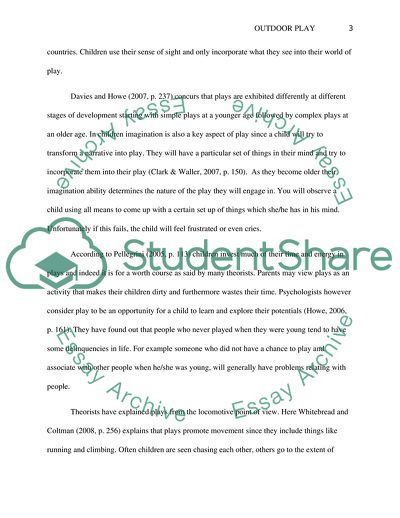Cite this document
(Outdoor Play and the Theoretical Dimensions of Play Literature review Example | Topics and Well Written Essays - 2750 words, n.d.)
Outdoor Play and the Theoretical Dimensions of Play Literature review Example | Topics and Well Written Essays - 2750 words. https://studentshare.org/education/1767813-outdoor-play
Outdoor Play and the Theoretical Dimensions of Play Literature review Example | Topics and Well Written Essays - 2750 words. https://studentshare.org/education/1767813-outdoor-play
(Outdoor Play and the Theoretical Dimensions of Play Literature Review Example | Topics and Well Written Essays - 2750 Words)
Outdoor Play and the Theoretical Dimensions of Play Literature Review Example | Topics and Well Written Essays - 2750 Words. https://studentshare.org/education/1767813-outdoor-play.
Outdoor Play and the Theoretical Dimensions of Play Literature Review Example | Topics and Well Written Essays - 2750 Words. https://studentshare.org/education/1767813-outdoor-play.
“Outdoor Play and the Theoretical Dimensions of Play Literature Review Example | Topics and Well Written Essays - 2750 Words”. https://studentshare.org/education/1767813-outdoor-play.


